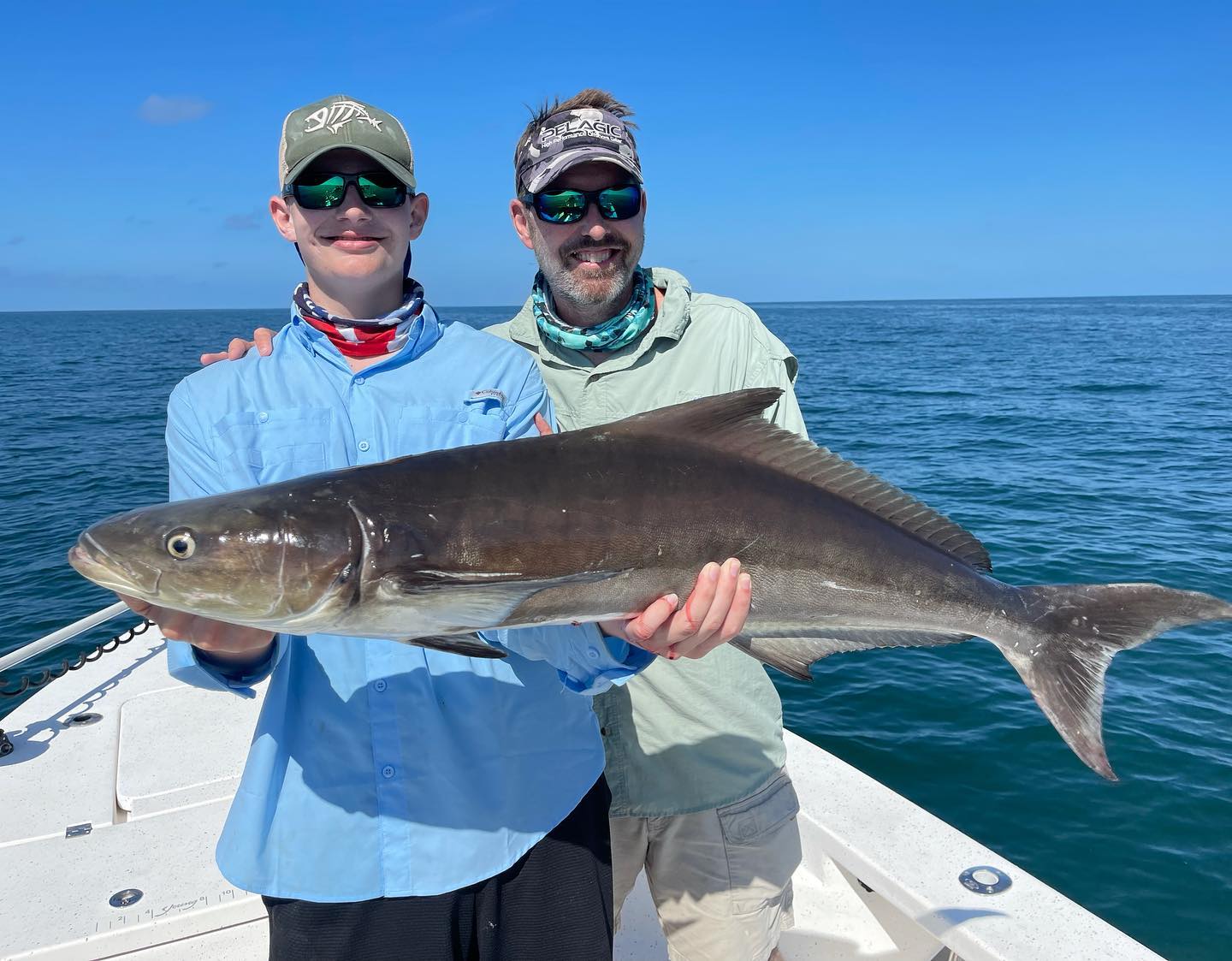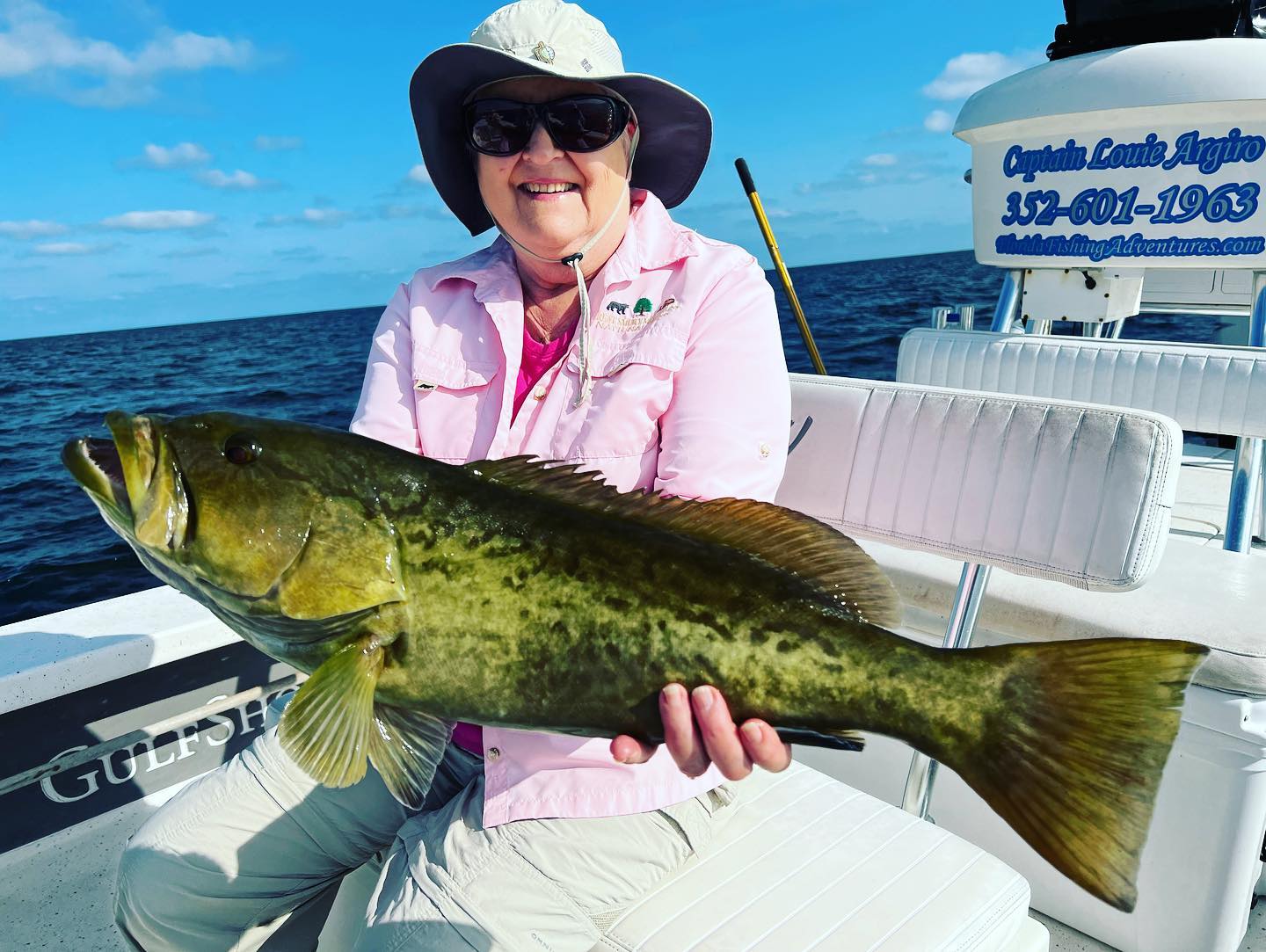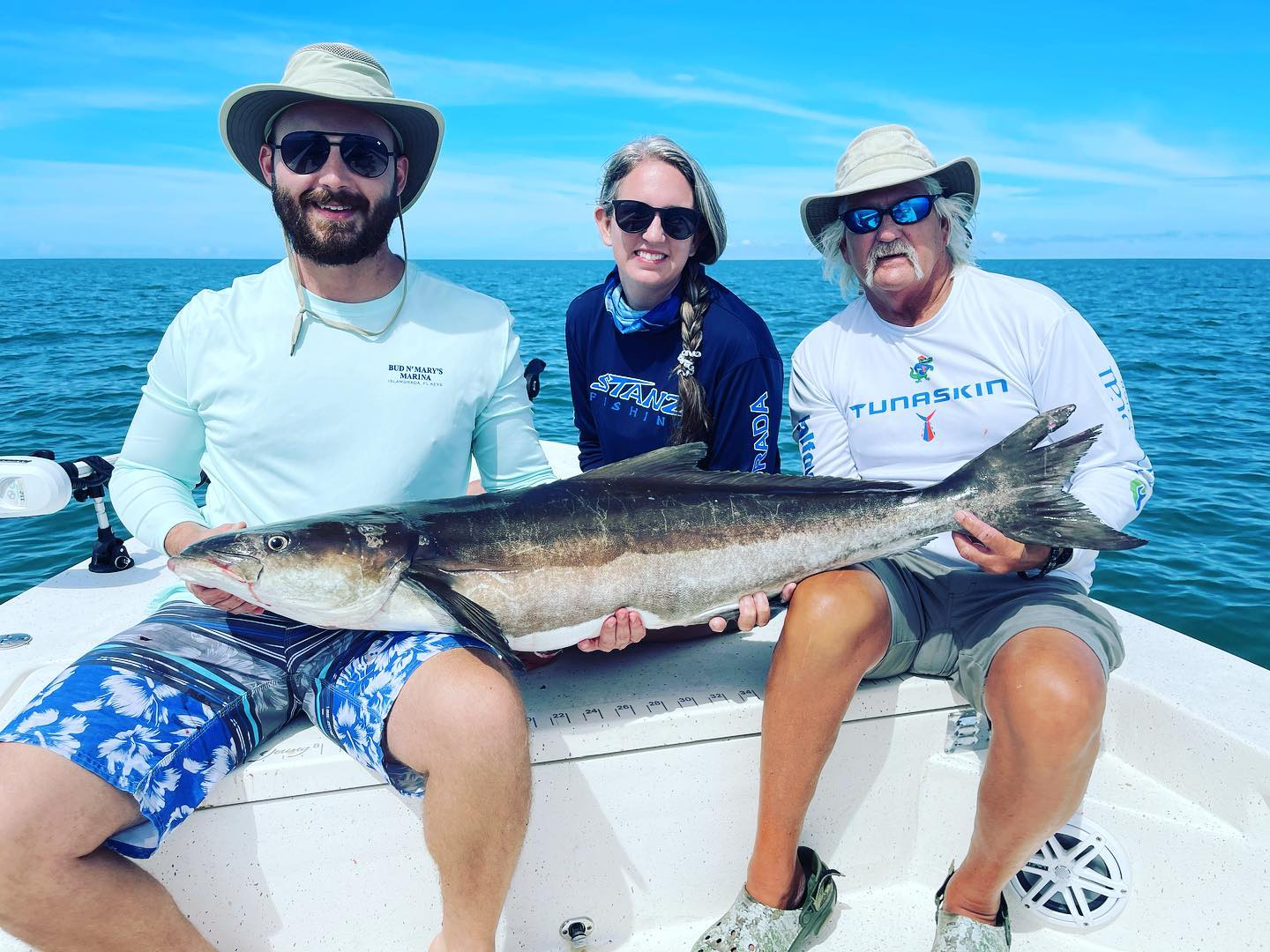
Last Updated on August 20, 2025 by Eric Bonneman
When the long, hot days of summer finally ease, the waters of Crystal River and Homosassa begin a seasonal shift that fishermen eagerly anticipate. Cooler mornings and more comfortable afternoons change the rhythm of the Gulf, drawing in fish that thrive in this transition. Redfish school tightly across oyster bars, trout feed aggressively on the grass flats, and shallow water grouper turn on just offshore. From winding creeks to open reefs, this is the point in the year when the fishery transforms and fresh opportunities open up across every stretch of water.
The slowdown of summer crowds adds to the appeal. With scalloping season wrapping up and the peak heat behind, fishermen find quieter waterways and more room to explore. The change in season means reliable action and a wider mix of species on each outing, creating a balance that many consider one of the best times to fish the Nature Coast. It is a window where steady bites, fewer boats, and the return of cooler weather combine to deliver memorable days on the water.
The Seasonal Shift After Summer
As the peak of summer heat gives way to late August and September, the Nature Coast begins to breathe easier. Morning air cools first, offering a refreshing start to the day before the sun climbs higher. By October, midday highs settle into a more comfortable range, often in the 70s and low 80s, while nights carry a crispness that fishermen welcome after months of sweltering humidity. The water responds gradually, with inshore temperatures easing down from the high 80s into the mid-70s, creating a balance that sparks new feeding patterns.
This change also alters the flow of life on the water. Tides remain strong, but cooler nights bring longer windows of activity during the day. Fish that slowed during the hottest months begin to push back onto the flats and stage along mangrove shorelines. Offshore, shifting currents and falling temperatures stir grouper, snapper, and other structure-oriented species into more reliable bites. By late September, the landscape of the fishery is fully different than it was in July, with each passing cold front fine-tuning the action.
Timing matters as the season develops. Early in the transition, the best fishing often comes at dawn when temperatures are at their coolest, but as the weather continues to stabilize, midday hours also produce steady results. By November, with less boat traffic on the water and consistent weather patterns, this part of the coast offers some of the most dependable fishing days of the entire year.
Inshore Fishing Opportunities After Summer
Inshore waters undergo the most noticeable transformation once the peak heat passes. Fish that were scattered or sluggish in the hottest months regroup and feed more predictably. The focus shifts to the grass flats, oyster edges, mangrove lines, and sandy transitions where seasonal movement concentrates multiple species. Each target has a distinct pattern during this window, giving fishermen consistent opportunities across varied habitats.
Redfish
Redfish are the undisputed highlight once the heat begins to fade. During the later part of summer and into fall, large schools form across the shallow flats, pushing wakes across oyster bars and sandy stretches. Sight fishing opportunities are at their peak, with groups of fish tailing and feeding aggressively. The cooler water allows them to roam longer through the day, making them more accessible beyond the usual early morning window.
- Habitat: Oyster bar edges, shallow flats, mangrove pockets.
- Baits/Lures: Gold spoons, paddle-tail plastics, cut mullet, live shrimp.
- Tactics: Position upcurrent; allow baits to drift naturally.
- Season Note: Multiple hookups common on strong moving tides.
Speckled Trout
Speckled trout thrive as the grass flats cool, and their feeding intensifies after the oppressive heat breaks. Smaller schools scatter across open flats, while larger gator trout hold near potholes, deeper cuts, and sandy edges. This is a prime time to fish topwater plugs at dawn, with trout striking aggressively as they chase baitfish. Later in the day, fishermen often switch to soft plastics or live shrimp under popping corks to keep the action steady.
- Habitat: Grass flats, potholes, sandy edges.
- Baits/Lures: Topwater plugs (early), soft plastics, suspending plugs, live shrimp under corks.
- Season Note: Redfish and trout frequently overlap on the same grounds.
Snook
As the tides cool, snook begin to shift out of their deeper summer haunts and position themselves along mangrove shorelines, creeks, and river mouths. This is their time to feed heavily before winter slows their metabolism. They strike live pinfish, scaled sardines, and shrimp with force, and can also be tempted by artificials presented close to structure.
- Habitat: Mangrove roots, creek mouths, river channels.
- Baits/Lures: Live pinfish, sardines, shrimp; jerkbaits or swimbaits.
- Season Note: Peak feeding window before seasonal slowdown.
Black Drum
Black drum gain prominence as cooler weather stabilizes. They favor crustacean-rich areas and can appear in large schools that make for steady action.
- Behavior: Travel in groups numbering into the hundreds in cooler months.
- Habitat: Oyster bars, bridge pilings, docks.
- Baits: Live shrimp or crabs on simple rigs.
- Catch Expectation: Multiple hookups possible when schools push into shallow rivers.
Sheepshead
Known for their subtle bite and bait-stealing reputation, sheepshead become a dependable target during this seasonal transition.
- Behavior: Concentrate around structure as temperatures fall.
- Habitat: Rocks, oyster beds, pilings.
- Baits: Fiddler crabs, shrimp.
- Catch Expectation: Challenging hooksets but excellent table fare.
Flounder
Flounder are not the primary target of most trips, but their numbers increase along sandy transitions and channels after summer.
- Behavior: Ambush predators staging in sandy cuts and passes.
- Habitat: Channel edges, sandy bottom transitions.
- Baits/Lures: Jigs tipped with plastics, live bait bounced along bottom.
- Catch Expectation: Common as bycatch when targeting trout or redfish.
Nearshore Fishing Opportunities After Summer
The nearshore waters of the Nature Coast, ranging from just a few miles off the shoreline out to 20 miles, provide a unique transition between the shallow inshore estuary and the offshore grounds. Once the heat of summer breaks, this zone comes alive. Shallow rock piles, ledges, and scattered reefs begin to hold more concentrated fish, and seasonal migrations push high-value targets within easy reach of short runs. The combination of accessible structure and active pelagic species makes nearshore trips one of the most rewarding options in the months following summer.
Structure-Oriented Species
This category dominates nearshore fishing after summer because hard bottom and shallow reefs act as magnets for fish seeking cooler, food-rich areas.
Gag Grouper
- Seasonal Behavior: The fall window, especially October through December, is prime for shallow-water grouper. These fish move into 8–35 feet of water and strike aggressively.
- Tactics:
- Bottom fishing with heavy tackle and live or cut bait.
- Trolling shallow-diving plugs across rock piles.
- Sight casting to structure in clear water less than 10 feet deep.
- Catch Expectation: Violent initial runs; heavy gear required to keep fish out of structure.
Mangrove Snapper and Hogfish
- Seasonal Behavior: Snapper become consistent on nearshore rocks by late fall, with hogfish offering a prized catch during November.
- Tactics:
- Light tackle bottom fishing with shrimp or small baitfish.
- Stealth and finesse presentations in clear water.
- Catch Expectation: Snapper are often mixed schools; hogfish are less common but highly valued for table fare.
Sheepshead (nearshore phase)
- Seasonal Behavior: Begin staging in large numbers on nearshore pilings and reefs as winter approaches.
- Tactics: Drop fiddler crabs or shrimp tight to structure.
- Catch Expectation: High numbers possible when conditions align.
Roaming and Pelagic Targets
These species pass through or hold around floating structure and bait concentrations, giving fishermen additional action beyond bottom species.
Tripletail
- Seasonal Behavior: Commonly found around crab trap buoys, channel markers, and weed lines in the months after summer.
- Tactics:
- Sight fishing with live shrimp or small jigs.
- Circle wide and approach quietly under trolling motor power.
- Catch Expectation: Feast-or-famine fishing; excellent table quality when landed.
Spanish Mackerel
- Seasonal Behavior: Cooler weather brings large schools feeding over bait pods nearshore.
- Tactics:
- Casting spoons, plugs, or jigs into breaking schools.
- Live pilchards or threadfins under chum slicks.
- Catch Expectation: Fast action; blistering runs on light tackle.
Cobia
- Seasonal Behavior: Though spring is their main peak, cobia continue to move through in early fall before migrating south.
- Tactics:
- Running marker to marker, pitching live bait or jigs.
- Targeting fish shadowing rays or turtles.
- Catch Expectation: Powerful, long battles; highly prized for the table.
Seasonal Highlights After Summer
The period following the peak of summer heat offers a shift that every fisherman notices. Inshore waters see redfish forming larger schools across oyster bars and shallow flats, while speckled trout feed more aggressively in the cooler water. Flounder stage along sandy cuts and channels, snook strike heavily along mangrove edges before winter slows them, and both black drum and sheepshead provide steady action around structure.
Nearshore and shallow offshore zones open some of the most anticipated opportunities of the year. Gag grouper deliver their best season from October through December across rocks, ledges, and springs in as little as eight feet of water. Mangrove snapper and hogfish highlight November on nearshore reefs, while tripletail offer a unique sight-fishing challenge around crab-trap buoys and floating debris.
A few added highlights round out the season. Cobia remain possible during early fall before shifting south, Spanish mackerel schools push into nearshore waters with cooler weather, and sharks stay active well into the season, keeping the action varied and consistent across short runs and shallow flats.
The Value of Fishing After Summer
The stretch that follows the heat of summer consistently proves itself as one of the most balanced times of year on the Nature Coast. Cooler water pulls life back across the flats, into the creeks, and onto the nearshore reefs, creating conditions that reward both technical skill and casual time on the water. Variety is a defining feature of this window, as fishermen can work a shoreline for redfish and snook, slide to a nearby flat for trout, and still finish a day on rock piles chasing grouper or snapper.
Beyond the action, the atmosphere changes with the season. The departure of summer crowds leaves the rivers and bays quieter, and the shorter days make each trip feel focused and deliberate. For many who know the Crystal River and Homosassa fishery, this is a time when opportunity and comfort align in ways that are rarely matched across the rest of the year.
The best way to experience this shift is on the water with a guide who works these patterns daily. Book a trip with Florida Fishing Adventures and take advantage of everything the post-summer season has to offer.



